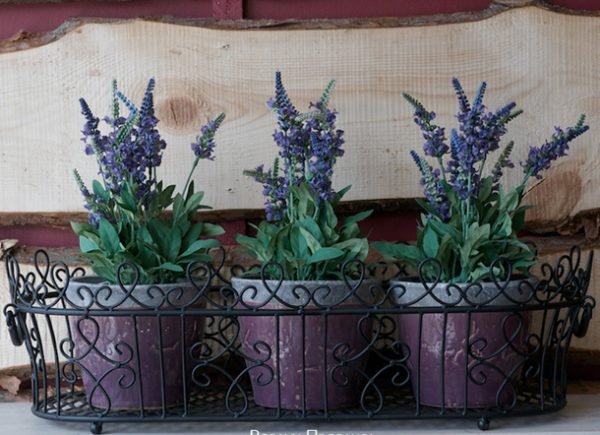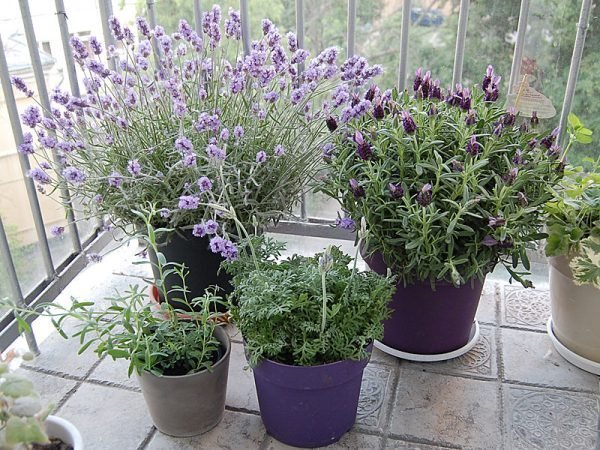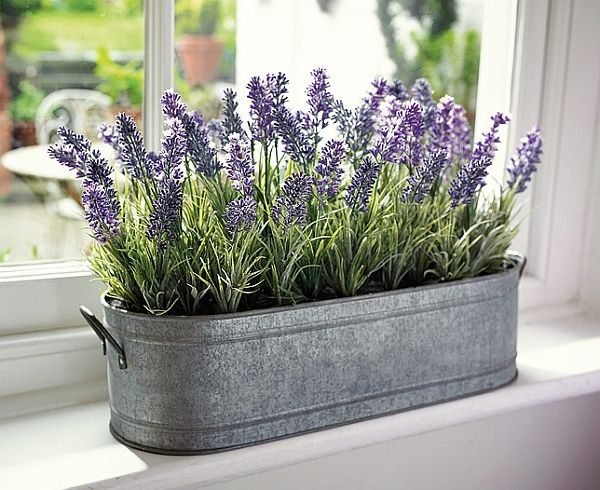Due to its healing properties, lavender are grown since ancient times, when was used in the treatment of insomnia and digestive problems. Lavender is not difficult to grow and besides that, always its aroma and beauty are welcome in every home. Lavender can be planted in a pot with the help of cuttings or from seeds, or you can buy a seedling with roots that you will replant into your pot.
If you want to grow lavender from seeds, place the seeds on top of sandy soil (mix od soil and sand) and cover them with a thin layer of perlite (It is a natural material found in nature in its raw form as a volcanic rock). Water lightly and let it stand in a bright place. The seeds should germinate after 2-3 weeks and when it releases shoots, about 10 cm long, they should be planted in a pot.
If you decide to plant lavender using cuttings, the cuttings must be taken from a healthy plant by cutting from a young twig at the point where the leaves begin. After that, the cutting should be dipped in reproductive hormone and planted in moist and sandy soil. The soil should be kept constantly moist. After about a month and a half, the cuttings should be transplanted into larger pots.
HOW TO CHOOSE A POT?
You need a pot that has good drainage and doesn’t retain excess water. If you can, choose a pot as large as possible, because over time your lavender will grow from 30-50 cm in height. If you keep the lavender inside, provide a pot with a saucer or stand. If you had bought a lavender seedling and need to replant it in a pot, choose one that is large enough to receive the root, with 2-3 cm of space on each side.
PLANTING LAVENDER IN A POT
Prepare the soil. The ideal soil for a plant such as lavender is alkaline (pH values of 7 and above). You can prepare the soil for optimized growing conditions by placing two handfuls of small round stones, along with half a cup of lime, well-composted manure. Mix well. Cover this mixture with a layer of soil. Stone will help with drainage, lime will alkalize the soil, and fertilizer will help your lavender have good conditions to start growing.
First, dig a hole big enough for the lavender root. Use a garden spade to dig the hole. The hole should be deep and wide enough to accommodate the root of the plant.
Before replanting, water the lavender in the pot or container in which you bought it, at least one hour before planting. This will ensure that the root is hydrated, but not soaked before it is replanted.
Prepare the root. Remove the lavender from the pot you bought it in and shake it gently to remove excess soil from the roots. Lavender should be planted with bare roots, in order to quickly and easily adapt to the new environment for growth.
Carefully place the plant in the prepared place for planting and leave it on the layer of soil slightly above the “stone mixture” that you mixed earlier. Make sure that the root of the plant doesn’t come into direct contact with the mixture. Fill the extra space around and above the lavender roots with soil, gently adding it in place around the base of the stem.
WATERING LAVENDER
Water moderately. Moisture is the enemy of lavender and if the root of the plant is excessively wet, it will kill the plant faster than in drought or low temperatures. In fact, overwatering new plants is the main cause of lavender failure.
To achieve the proper level of watering, make sure that the soil has become completely dry between each watering. However, the plant should not be allowed to become dehydrated.
CARE AND MAINTENANCE OF LAVENDER
The best way to grow lavender in a pot is to imitate the natural growth conditions that the plant requires. This plant originates from the Mediterranean region, which is sunny, warm and dry.
Before you put the lavender in the pot, think about where the pot will stand. Your plant needs 8 hours of direct sunlight. This plant likes to sunbathe. Lavender likes warm and dry growing conditions.A temperature of at least 20 degrees suits her.
In order to prevent irregular growth and form a lush and dense bush, lavender should be pruned after flowering, but also in early spring or autumn. It can also be cut in the summer to maintain its shape. In order not to produce seeds and bloom more, lavender should be trimmed regularly.
LAVENDER SUPPLEMENT
Lavender is a fairly easy plant to maintain and should be fed only once a year, preferably in the spring.A fertilizer that is light and calcareous can suit her.
In the gallery below, see how this beautiful plant can complement our home.


Image credit

Image credit

Image credit

Image credit



Image credit

Image credit

Image credit

So there’s just pics, not telling how to plant them and care?
Hi Sheila
Thanks for your message. We will update the article with more information for conditions and tips on how to grow the lavender plant.
Best Regards
Not very informative. not helpful at all!
Thanks for your message!
Sorry that our text is not helpful to you. We will appreciate if you tell us what informations are crucial for you and we will include it in the next revision of the text.
Best Regards
Good day. I received a spanish lavendar tree for mothers day. There is little information on it’s card. What l would like to know is this a perenniel and can it be planted outdoors and survive the winter in Edmonton, Alberta?
Hello
Thanks for your message.
Spanish Lavender is one of 48 known Lavender species. It is perennial. Spanish lavender care is similar to other lavender varieties and can tolerate more heat compared to English lavender. Cold soils with frosts apply great damage to the plant, although the dormant plant can withstand temperatures up to -20ºC. If vegetation begins early, lavender can die due to late spring frosts. Lavender requires a lot of sun and light.
I love lavender , but, you don’t have any instructions for growing it.
I think it’s time you really updated your information about lavender, or you won’t have any followers!
Hi Lorene
Thanks for your message. We love Lavender also.
We hope that the updated text will help with information on how to grow and maintain the lavender plant.
Best Regard